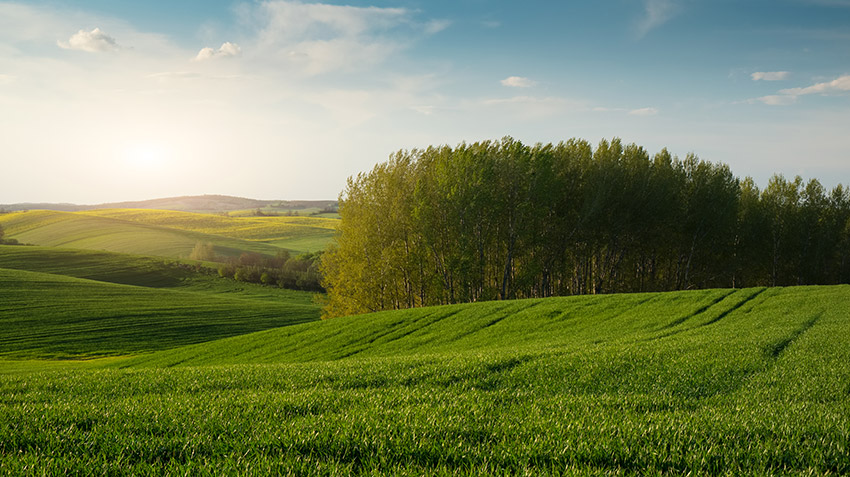
Losing a loved one is always difficult, and making funeral arrangements during a time of grief can be overwhelming.
More families today are exploring green funeral options as a meaningful and environmentally responsible way to say goodbye. But what exactly is a green funeral, and how does it differ from a traditional one? We’ll explain the key differences to help you make a more informed choice for your family.
What is a green funeral, and why is it gaining popularity?
Green funeral options are growing in popularity due to a rising awareness of environmental impact, even at the end of life. Many families now want their final tribute to reflect values like sustainability and simplicity. A green funeral focuses on reducing the ecological footprint of burial and memorial practices. It avoids harsh chemicals, non-biodegradable materials, and energy-intensive services. Choosing a green burial can be a deeply personal decision rooted in environmental ethics, cultural beliefs, or a desire to return to the earth more naturally.
What is a green funeral?
A green funeral is a burial or memorial practice designed to have minimal impact on the environment. This means avoiding embalming fluids, synthetic caskets, and cement burial vaults. The guiding principles include simplicity, conservation, and a return to natural cycles. The body is typically buried in a biodegradable container or shroud, and services often take place outdoors or in non-traditional settings. Many green funerals avoid excess transportation, electricity, and water usage, offering a more sustainable farewell.
What happens in a traditional funeral?
A traditional funeral generally includes embalming, a wake or viewing, a church or chapel service, and a cemetery burial. The body is often prepared using chemical embalming fluids to preserve appearance, then placed in a hardwood or metal casket, which is lowered into a cement-lined grave. These services typically involve the use of floral arrangements, printed materials, and sometimes motor processions. While meaningful, these processes can carry a significant environmental toll, especially due to non-biodegradable materials and high energy consumption.
How do green funerals and traditional funerals compare?
Embalming Practices
In a traditional funeral, embalming is often used to temporarily preserve the body for viewings and ceremonies. This process involves injecting formaldehyde-based chemicals, which can pose environmental risks during burial. Green funerals typically skip embalming entirely or use non-toxic alternatives. Natural decomposition is encouraged in green burials, as it aligns with the intention to return the body to the earth as gently as possible.
Burial Materials
Traditional funerals usually involve caskets made from hardwood, metal, or materials treated with varnish and sealants. These caskets are often placed in concrete vaults, further extending the body’s preservation and delaying decomposition. Green funerals use simple, biodegradable materials such as untreated wood, wicker, cardboard, or cotton shrouds. There are no vaults or liners, allowing for natural breakdown and less disruption to the soil.
Location of the Burial
Traditional funerals are usually held in cemeteries that follow strict landscaping and maintenance routines. These spaces often rely on mowing, pesticides, and irrigation, which can contribute to carbon emissions and water use. Green funerals, on the other hand, take place in natural burial grounds, which preserve native ecosystems and minimize maintenance. These spaces are often designed to resemble natural woodlands or meadows, offering a serene and ecologically balanced resting place.
Environmental Footprint
Green funerals are designed to leave a much smaller environmental footprint compared to traditional ones. Traditional burials contribute to deforestation, groundwater contamination, and carbon emissions from manufacturing and transporting materials. A green funeral eliminates or significantly reduces these impacts. From skipping embalming to using biodegradable containers and avoiding concrete vaults, every choice in a green burial helps conserve natural resources.
Are green funerals more affordable?
The cost of a funeral can be a deciding factor for many families. Traditional funerals, with embalming, caskets, vaults, and elaborate ceremonies, often cost thousands of dollars. Green funeral options are generally more affordable because they simplify the process. Without embalming, expensive caskets, or vaults, families may save significantly. Services also tend to be smaller and more intimate, reducing the need for printed materials, extensive floral arrangements, or large venues.
Are there legal or religious restrictions?
Green burials are legal in most states, although specific regulations vary by location. It is important to consult with a local funeral provider or natural burial ground to ensure compliance with state and municipal laws. Some religions fully support green burials, especially those that emphasise simplicity and natural processes. Others may have traditions that require embalming or specific rituals. Understanding both legal requirements and religious customs can help families make respectful and lawful choices.
What are green cemeteries like?
A green cemetery is a natural burial ground where sustainability guides every decision. These cemeteries are often located in forests, fields, or meadows and are maintained without pesticides, irrigation, or heavy landscaping. Grave markers may be optional or replaced with natural elements like plants or GPS coordinates. Some green cemeteries carry certifications, such as those from the Green Burial Council, to assure families that they meet environmental standards. You can search online or ask local funeral homes to help locate one near you.
Is cremation considered eco-friendly?
Cremation is often viewed as an alternative to traditional burial, but its environmental impact can vary. Standard cremation uses a significant amount of natural gas and releases carbon dioxide. However, newer options like water cremation, also known as alkaline hydrolysis, use less energy and fewer emissions. Human composting, or natural organic reduction, is another emerging method. While not all cremations qualify as green funeral options, innovations in the field are making it possible to choose more environmentally responsible practices.
How can you make the right choice for your family?
Deciding between traditional and green funeral options involves personal, environmental, and financial considerations. It helps to speak with funeral providers about what services they offer and whether they support green burials. If you have specific wishes for a natural burial, it is essential to document them in advance and share them with your family. Doing so ensures that your preferences are respected and that arrangements align with your values.
Why families are turning to green funeral options
As awareness about environmental impact grows, many families are embracing green funerals as a way to honour their loved ones while protecting the planet. These choices offer a meaningful alternative to conventional practices by focusing on simplicity, sustainability, and natural beauty. Whether driven by personal values, religious beliefs, or ecological responsibility, choosing a green funeral can be a heartfelt way to return to the earth with dignity and care. Speak with a professional funeral services provider to learn more.
Frequently Asked Questions
Below are some additional questions to consider:
Can you have a viewing with a green funeral?
Yes, viewings are possible with a green funeral, especially if refrigeration or dry ice is used in place of embalming. Some providers offer biodegradable caskets designed for temporary display.
How long does it take for a body to decompose in a green burial?
Decomposition varies based on climate and soil, but in general, a naturally buried body may decompose within one to three years, returning nutrients to the ecosystem.
Can you still have a headstone in a green cemetery?
Many green cemeteries allow flat natural stones or other markers, but they often discourage traditional headstones. Some use GPS coordinates or native plants for marking graves.



